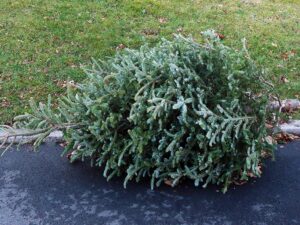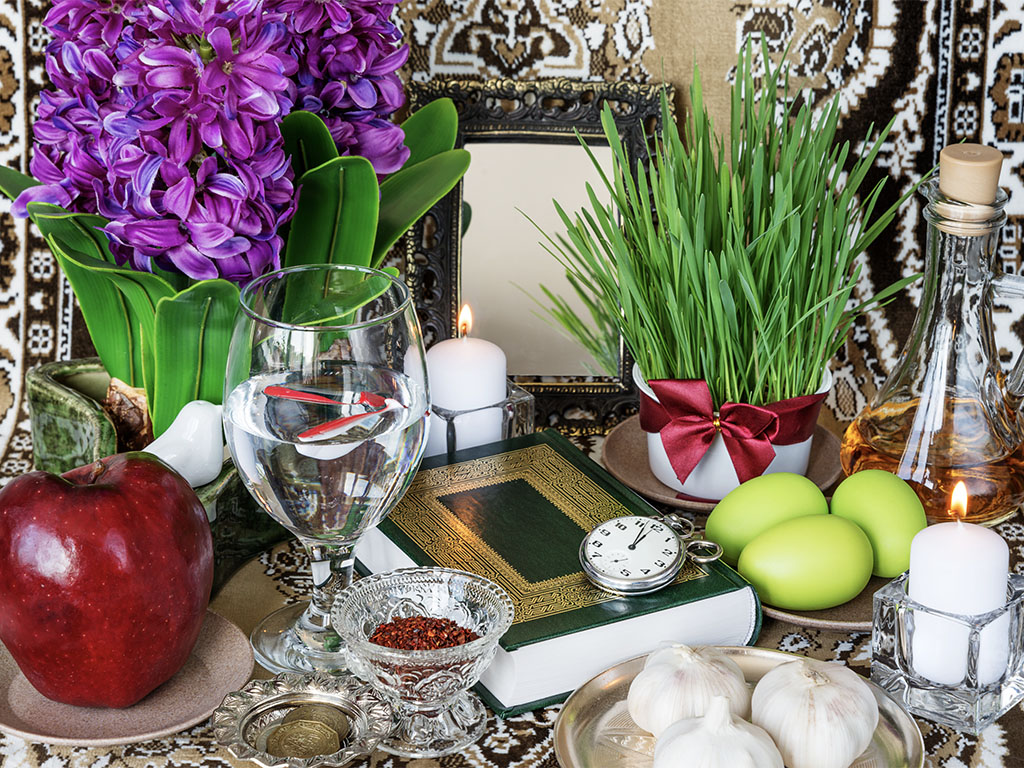नवरोज़ ईरान, अफ़ग़ानिस्तान, अज़रबैजान और पूरे मध्य एशिया में मनाया जाने वाला राष्ट्रीय नववर्ष उत्सव है। ईरानी कैलेंडर का पहला दिन मार्च विषुव, यानी वसंत ऋतु के पहले दिन पर पड़ता है, जो इस वर्ष 20 मार्च था। यह एक वसंतकालीन उत्सव है जिसकी गतिविधियाँ पुनर्जन्म और मानव और प्रकृति के बीच के संबंध का प्रतीक हैं। ईरानी कवि सादी (1210-1291) ने लिखा था, "जागो, सुबह की नवरोज़ हवा बगीचे में फूलों की वर्षा कर रही है।"
नौरोज़, जिसका फ़ारसी में अर्थ "नया दिन" होता है, प्राचीन मिथकों और कथाओं के साथ-साथ परंपराओं और प्रतीकों से भी भरा हुआ है। इसकी तैयारियाँ बसंत ऋतु के आगमन से हफ़्तों पहले शुरू हो जाती हैं, जिसमें घर की सफ़ाई और सब्ज़े (गेहूँ, जौ, मूंग या मसूर) को एक बर्तन में उगाना शामिल है। इस बर्तन को हफ़्त-सीन मेज़ पर रखा जाता है, जो नौरोज़ के पालन का केंद्र बिंदु है। इसके साथ फ़ारसी अक्षर "सीन" या स से शुरू होने वाली छह अन्य प्रतीकात्मक वस्तुएँ भी रखी जाती हैं। इनमें शामिल हैं:
- सीब (सेब) - स्वास्थ्य और सौंदर्य का प्रतीक
- सेनजेड (सूखे ओलिएस्टर बेरीज) - बुद्धि और पुनर्जन्म
- समनु (गेहूं का हलवा) - शक्ति/न्याय
- सोमाक (सुमाक) - धैर्य
- सेरकेह (सिरका) – आयु/धैर्य
- सीर (लहसुन) - शरीर और पर्यावरण की सफाई
हफ्त-सीन में अन्य वस्तुएं भी शामिल हैं, जैसे कि हाफिज की एक फारसी कविता पुस्तक, प्रतिबिंब का प्रतीक दर्पण, प्रजनन क्षमता के लिए रंगीन अंडे और जीवन का प्रतिनिधित्व करने के लिए एक कटोरे में सुनहरी मछली।
गांव की अधिक खबरों के लिए नीचे दिए गए टैग "गांव में क्या चल रहा है" पर क्लिक करें।





